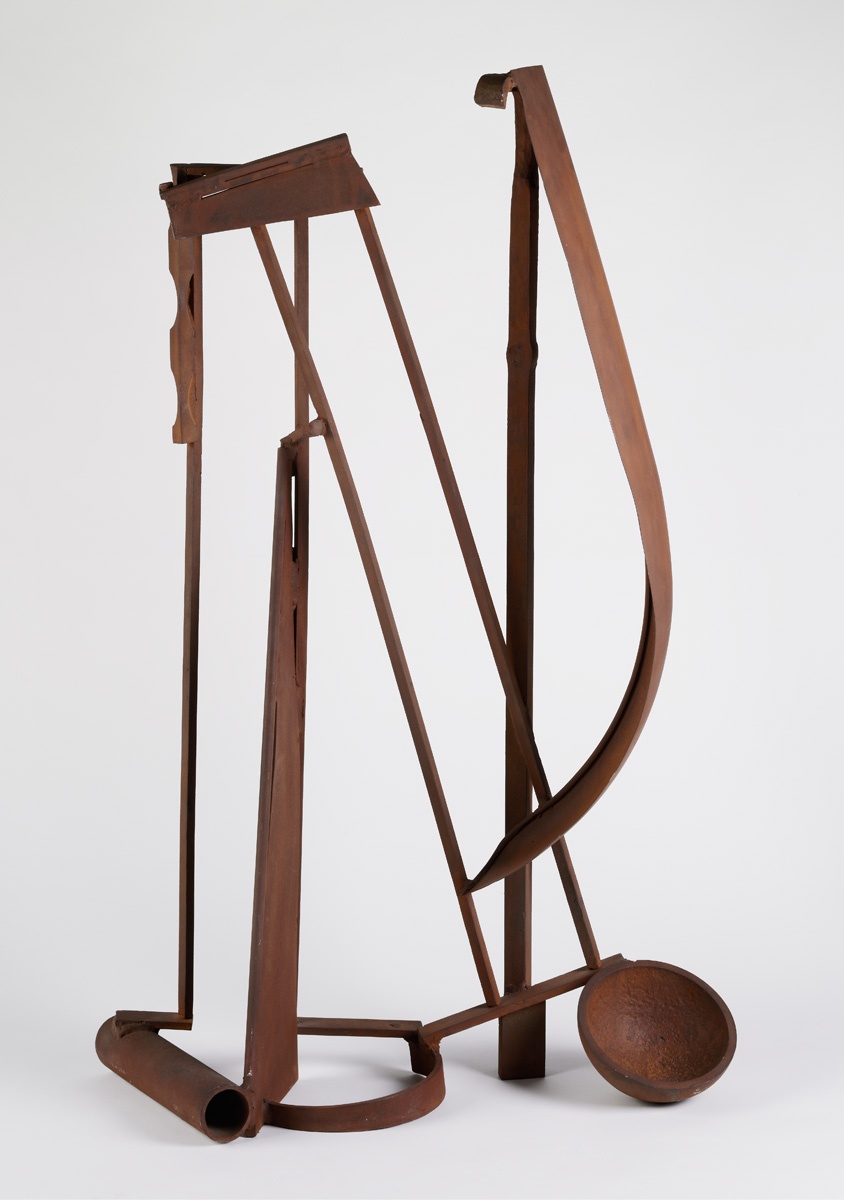Anthony Caro is a prominent figure in twentieth-century art, and one of the creators of modern British sculpture. In the 1950s he developed a sculptural language that drew on the achievements of Cubism, then from the end of the decade, leaving behind figurativeness, he began to build compositions freely developing in space from units welded together and painted one colour. These pieces of steel, cut to irregular shapes and exposing the texture of crude metal, lend an associative mood and a moving lyricism to Caro’s sculptures. Evoking movement, and often playing on spatiality, on the ambiguity and interchangeability of inside and outside, in the artist’s view these works lie half-way between architecture and sculpture, and come into their own when the viewer walks around them. Catalan Song is from one of Caro’s most poetic series. In 1987 he was invited to Barcelona to create works reflecting the colourful culture of the Mediterranean city at the sculpture workshop Casa de la Caritat. This sculpture (which he completed in his London studio) uses the characteristic forms of Gaudí’s city, and the airily graceful wrought-iron ornamentation of Catalan Art Nouveau. Through a virtuoso interworking of the filigree-like elements (window gratings and other utilitarian objects) Caro created a rhythmically articulated, balanced sculpture, and he was able to accentuate the elegance of the piece by rustification of the surface with a rust coating. Márton Orosz
en

